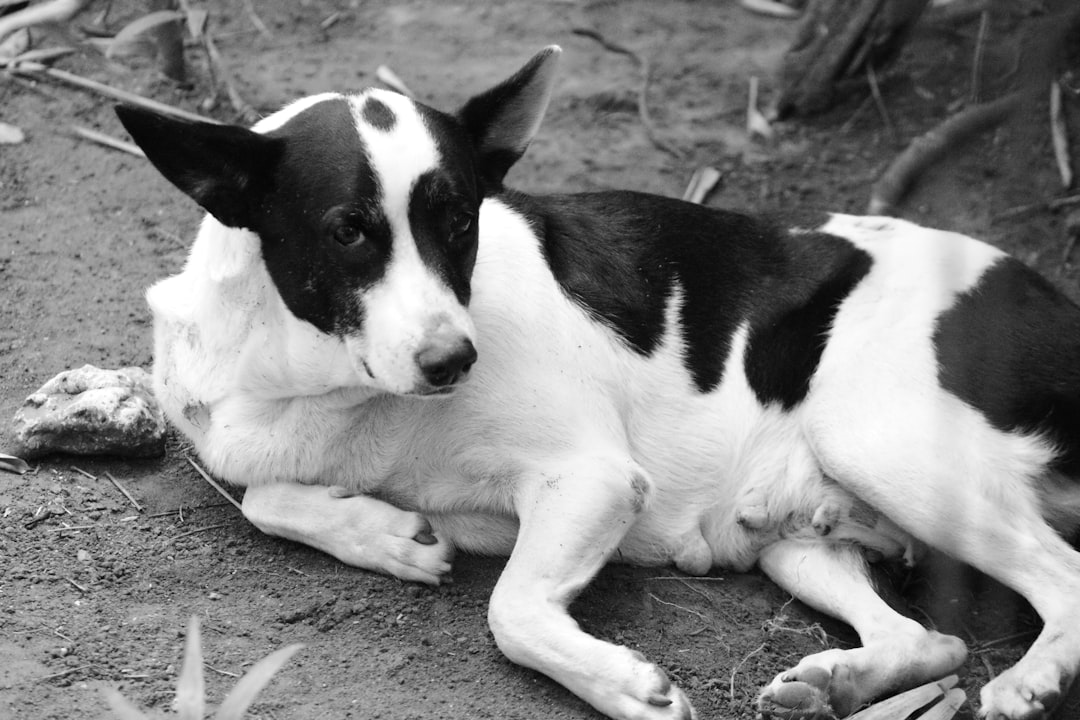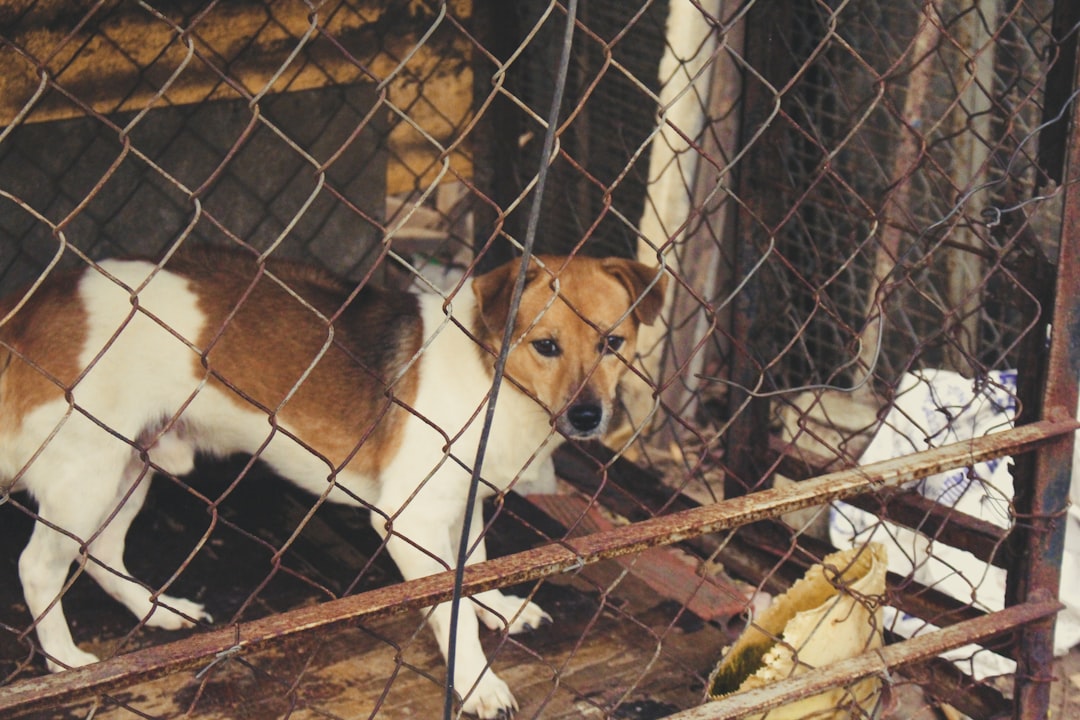

Engage prospects with a scan and streamline customer engagement with FREE QR code marketing tools by Sona – no strings attached!
Create a Free QR CodeFree consultation

No commitment

Engage prospects with a scan and streamline customer engagement with FREE QR code marketing tools by Sona – no strings attached!
Create a Free QR CodeFree consultation

No commitment
In today’s digitally driven world, QR codes have evolved from a novelty into a strategic powerhouse for bridging offline engagement with online action. For animal identification services, these codes offer a secure, scalable, and highly effective way to strengthen animal tracking technology, streamline pet identification systems, and deliver essential information to owners, veterinarians, and animal welfare organizations without specialized devices or training. A single scan connects physical assets to living records and instructions, improving safety and responsiveness while reducing paperwork and data friction.
This transformation is especially significant for professionals in pet identification, veterinary practice management, and wildlife conservation. Teams have long struggled with missed connections, incomplete records, and friction between field activity and digital systems. QR code-powered workflows help address frustrations around lost animals, slow data entry, and gaps in communication by providing real-time access to health details, ownership data, and field updates from any smartphone. The result is faster reunifications, better-informed care, and measurable improvements in operational efficiency.
Embedding QR codes on ID tags, medical records, collars, signage, and carrier labels bridges the gap between static physical assets and dynamic communication tools. Animal identification services can leverage this to reduce lost opportunities, make operations more responsive, and enable trusted handoffs between stakeholders. This guide explores how thoughtful QR deployments tackle common pain points, elevate educational outreach, and improve both safety and business outcomes.

One of the most persistent challenges in animal identification is ensuring every pet or animal can be quickly and accurately identified, especially when forms are missed or records are incomplete. Traditional paper-based processes create delays and gaps. Staff juggle manual follow-ups that are slow and error-prone, while owners or field reporters often do not know where to find accurate, current information. This is especially true in veterinary practice, where timely education and follow-up are critical.
QR codes bridge the gap between physical items and digital records. When placed on collars, kennel cards, carrier labels, microchip documentation, or field signage, they make interactions seamless for pet owners, veterinary staff, and conservation teams. A scan can open a profile, map a shelter location, trigger a lost pet report, or begin a pre-filled ownership verification. These experiences reduce friction, improve education, and strengthen compliance.
By adopting QR codes, organizations can automate and enrich every step, from code generation to CRM sync and analytics. This addresses longstanding industry frustrations around incomplete data and fragmented communication, while giving customers and staff faster access to the information they need to make good decisions. For teams integrating scan events into marketing and service workflows, Sona’s blog on CRM sync provides helpful guidance. Start creating QR codes for free: Start creating QR codes for free.

Professionals in animal identification often contend with fragmented workflows, data silos, and missed connections. As more engagement shifts to digital channels, the inability to quickly access or update pet data can lead to poor experiences and risky delays. Paper forms become outdated, new contact details go unrecorded, and anonymous interactions slip through the cracks.
QR codes resolve these issues by connecting every physical touchpoint to a digital action. They enhance speed and simplicity, allow content to be updated without reprinting, and provide visibility into what is working. For high-volume environments such as veterinary clinics, shelters, and adoption events, this means fewer data lags, better continuity of care, and clearer communication with owners and partners.
In practice, this means you can put QR codes on appointment cards, kennel cards, kennel doors, carrier stickers, clinic posters, field signage, and direct mail, then adjust strategy as the data reveals what customers respond to most.

Failure to capture or update key information at the right time can cripple animal identification efforts. When owner contacts or medical notes go stale, the consequences are real: delayed care, missed reunifications, or unsafe handling. QR codes support multiple data formats and let you change destinations as information evolves, which helps keep records current without adding complexity for staff.
Choose formats that match the task. A clinic may favor web links to patient portals, while a shelter might prioritize forms for adoption interest or lost pet reports. Wildlife teams may use SMS or email templates to simplify field submissions. The right structure reduces friction and raises completion rates.
Dynamic QR codes are a smart default for most deployments because they allow redirection as programs evolve. Reserve static codes for fixed destinations such as a clinic homepage, staff badges, or evergreen educational posters.
The physical-to-digital intersection in animal identification can hide powerful insights and missed value. Flyers, ID tags, and kennel cards often spark interest but fail to convert because there is no direct route to action. QR codes transform these touchpoints into measurable, guided journeys that build trust and deliver results.
To uncover growth, instrument every offline moment you already influence. When a person walks past a kennel, drops off a pet for boarding, or reads a field sign, a QR code can channel that attention into education, reporting, or enrollment. Once these scans are tracked, you can refine messaging, placements, and follow-up to boost outcomes.
When offline-to-online connections are in place, trends emerge quickly. You will see which pages educate best, which facilities drive the most engagement, and where to invest in training or messaging to raise scan rates and completion rates.

Persistent engagement gaps can prevent service providers from realizing the full value of their touchpoints. QR codes fill those gaps by turning anonymous moments into trackable actions. The key is to match the code to a single, high-value intent and make the next step obvious.
Here are proven applications that map closely to common customer interactions:
Each of these use cases can be measured. Track scan-to-form completion, follow-up engagement, and outcome metrics like reunification time or adoption conversion. Use the data to fine-tune your scripts, signage, and code placement.
Each scan captures intent, context, and behavior. When you deploy unique QR codes across touchpoints, you can build audiences based on what people want and where they engaged, then follow up with relevance. This improves conversion quality and reduces wasted outreach. For execution ideas, explore Sona’s retargeting playbook.
In animal identification services, audience distinctions often include pet owners, current clients, prospective adopters, fosters and volunteers, veterinarians and staff, and citizen scientists. Segmenting by use case and location gives you a more precise picture. For example, a scan from an adoption kennel has different intent than a scan from a wildlife sign at a trailhead.
With Sona QR, each code becomes a smart gateway into your funnel. You can attach campaign parameters, collect events, and sync audiences so that retargeting reflects the user’s exact intent and recent interaction.
QR codes act as connectors across your offline and digital campaigns, creating real-time engagement loops. They transform static materials into interactive experiences that yield measurable data. This connected approach is ideal for animal identification programs where the moment of need is often physical but the information and workflows are digital.
Make QR codes the onramp to your educational content, forms, and portals. Provide a consistent experience across channels and use a central dashboard to track performance. Over time, you can reallocate budget to the materials and placements that truly move the needle.
With a centralized platform such as Sona QR, you can manage codes across channels, monitor performance by placement, and sync scan activity with your CRM for coordinated follow-up.
A strong plan prevents common pitfalls such as broken links, low scan rates, and poor follow-up. Treat QR deployment like any other campaign: set goals, design for context, test carefully, and measure outcomes.
Begin by aligning your QR use cases with concrete business objectives such as shortening reunification time, increasing adoption conversion, raising compliance with medical instructions, or improving wildlife reporting quality. Then choose the code type, placement, and destination that best serve those goals and your audience.
Select one primary outcome for each code. For example, a lost pet tag should connect the finder with the owner immediately, while a kennel card code should capture adoption interest with a short form and a path to schedule a visit. Keep each code focused so the call to action is obvious.
Choose static codes for fixed destinations such as evergreen educational content or staff contact pages. Use dynamic codes for anything that needs tracking, retargeting, or future updates without reprinting, such as changing animal statuses or evolving protocols.
Design codes with high contrast, sufficient size for the scanning distance, and a clear frame. Add a concise call to action like Scan for care instructions or Report a sighting. Include brand elements for trust, but never at the expense of scannability.
Place codes where attention is highest and intent is clear. On collars or tags, ensure the code is unobstructed and scratch resistant. In clinics, position codes at check-in, on discharge packets, and near medication pickup. At events, use QR collars, kennel cards, and posters at eye level.
Instrument every code with tracking parameters to distinguish placements. Monitor scan volume, completion rates, and downstream actions such as calls, form fills, or purchases. A/B test landing page layouts, headlines, and calls to action to lift conversion.
Use platforms that support cross-device testing, real-time analytics, and rapid reporting. This helps you adapt quickly, fix issues before they escalate, and continuously learn which assets or messages are most effective.
Organizing campaigns systematically ensures no engagement opportunity slips through the cracks. With each iteration, you can retire underperforming assets, double down on winning placements, and move from guesswork to predictable results.
A lack of visibility into anonymous interactions and outdated records undermines impact. Animal identification teams need more than scan counts. They need to connect scans to actions and outcomes, then use those insights to improve operations and revenue.
End-to-end measurement begins with capturing granular scan data, continues with CRM enrichment and automation, and culminates in attribution that links QR interactions to tangible results. This approach proves the value of your programs and guides better investments across channels.
With Sona QR and Sona.com, you can track every scan, respond in real time, sync with your CRM, and attribute revenue using identity resolution and multi-touch models. This turns QR engagement into actionable intelligence that supports growth and mission outcomes.
Even well-designed codes can underperform without thoughtful deployment and follow-up. The most effective teams treat QR codes as both a user experience tool and a data engine. They plan for durability, educate staff, and automate engagement so that every scan becomes a step toward resolution or education.
Focus on a few practical habits and iterate continuously. Prioritize the placements that align with your highest-value goals, then design the scan destination to satisfy the scanner’s immediate intent without extra clicks or confusion.
Creative deployments can extend your reach. For instance, include QR stickers on microchip registration paperwork that lead to a new-owner onboarding hub. Or add QR codes to foster supply bags that open a quick video series on care best practices.

Practical examples demonstrate how closing gaps in data, follow-up, and education pays off. They also show how QR codes make programs more resilient to staff turnover and variable foot traffic by standardizing the path from interest to action.
Consider how these scenarios translate to your environment and audience. Adapt the call to action, destination, and measurement to fit your goals, then review the analytics to learn and refine.
These examples illustrate how a thoughtfully integrated QR system converts anonymous or missed engagements into actionable data, sustained relationships, and measurable outcomes.
Success with QR codes requires aligning the experience, environment, and measurement. Teams often stumble when they use generic destinations, neglect mobile optimization, or fail to train staff to promote scanning. The fix is simple: design with intent, make the next step obvious, and measure everything you can.
Treat QR codes as living assets. Update content as information changes, retire codes that underperform, and celebrate the placements that consistently deliver results. Over time, your program becomes both easier to manage and more effective.
By staying vigilant and iterating, animal identification service providers avoid wasted effort, surface new growth avenues, and consistently elevate both customer and organizational outcomes.
QR codes have evolved into much more than simple utility stickers. They represent a shift toward connected, data-driven animal identification services. With every scan, they transform static interactions into actionable data points, allowing pet owners, professionals, and animal welfare organizations to respond faster, reach further, and deliver better outcomes.
By leveraging platforms that streamline campaign creation, capture real-time behavioral data, and power multichannel integration, animal identification professionals can solve longstanding challenges tied to missed follow-up, anonymous engagement, and siloed data. Sona QR and Sona.com give you the tools to generate and manage codes, measure impact, and connect scan activity to your CRM and revenue—grounded in offline attribution and multi-touch models. Start creating QR codes for free: Start creating QR codes for free.
QR codes have revolutionized animal identification services by transforming traditional tagging into an interactive, informative experience that educates pet owners and stakeholders instantly. Beyond simply identifying animals, QR codes enable seamless access to critical information—vaccination history, care instructions, and ownership details—enhancing customer trust and engagement in ways static tags never could. Imagine a pet owner scanning a code and instantly receiving tailored care tips or updates, fostering stronger connections and promoting responsible animal stewardship.
With Sona QR, you can create dynamic, trackable QR codes that evolve as animal data changes, eliminating the need for costly replacements while capturing valuable insights on customer interactions. This means better-informed customers, improved animal welfare, and actionable data that drives smarter service improvements. Start for free with Sona QR today and turn every animal tag into a powerful tool for education, engagement, and growth.
QR codes connect physical assets like collars and tags to digital records, enabling instant access to pet information, owner contacts, and care instructions through any smartphone without special devices or training.
QR codes improve safety and responsiveness, reduce paperwork and data errors, speed up lost pet recovery, enable real-time updates, enhance communication between owners and veterinarians, and provide measurable engagement analytics.
You can create QR codes using platforms like Sona QR that offer free code generation, allowing you to embed links to pet profiles, medical info, or lost pet reports on ID tags, collars, or other assets.
A pet's QR code should link to up-to-date details such as owner contact information, medical records, vaccination history, lost pet reporting forms, or adoption interest pages depending on the use case.
Veterinary businesses can add QR codes to patient cards, discharge instructions, check-in signage, and medication packaging to streamline data entry, provide care instructions, schedule appointments, and track engagement through CRM integration.
Use Sona QR's trackable codes to improve customer acquisition and engagement today.
Create Your FREE Trackable QR Code in SecondsJoin results-focused teams combining Sona Platform automation with advanced Google Ads strategies to scale lead generation

Connect your existing CRM

Free Account Enrichment

No setup fees
No commitment required

Free consultation

Get a custom Google Ads roadmap for your business






Launch campaigns that generate qualified leads in 30 days or less.
